Feature ArticleDECARBONIZATION WAVES FROM ASIA TO THE WORLD
AZEC (Asia Zero Emission Community) partner countries are attracting attention from Japanese companies looking to expand overseas. In JBIC's latest “Survey Report on Overseas Business Operations by Japanese Manufacturing Companies,” based on responses to an annual questionnaire, five AZEC countries ranked in the top 10 most promising investment destinations. ASAI Mizuki of the Strategic Research Department, Corporate Planning Group, explains what lies behind their popularity and the issues facing decarbonization efforts.

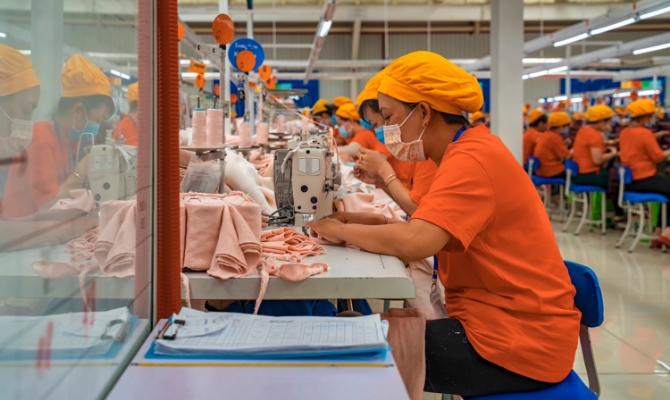
Vietnam is growing increasingly important in the supply chains of Japanese companies. (Photo: A garment factory in an industrial park in Ho Chi Minh City)
ASEAN nations rise as China alternatives as Japanese firms look overseas
The fiscal 2024 survey report revealed that Japanese companies are continuing to expand globally, while a historically weak yen is driving overseas sales ratios to record highs. However, for the first time since 2020, the percentage of companies expecting to boost their overseas operations in the medium term declined year-on-year, reflecting external factors such as weakening global demand and China’s economic slowdown.
Nevertheless, more than 60 percent of companies expressed intentions to bolster overseas operations, indicating that Japanese corporate interest in overseas markets and expectations for growth remain high.
In terms of specific countries and regions considered promising for business development over the medium term, India was at number one for the third year in a row. Recognized for its massive population of more than 1.4 billion and its growth potential, it easily retained top spot with 60 percent of the votes.
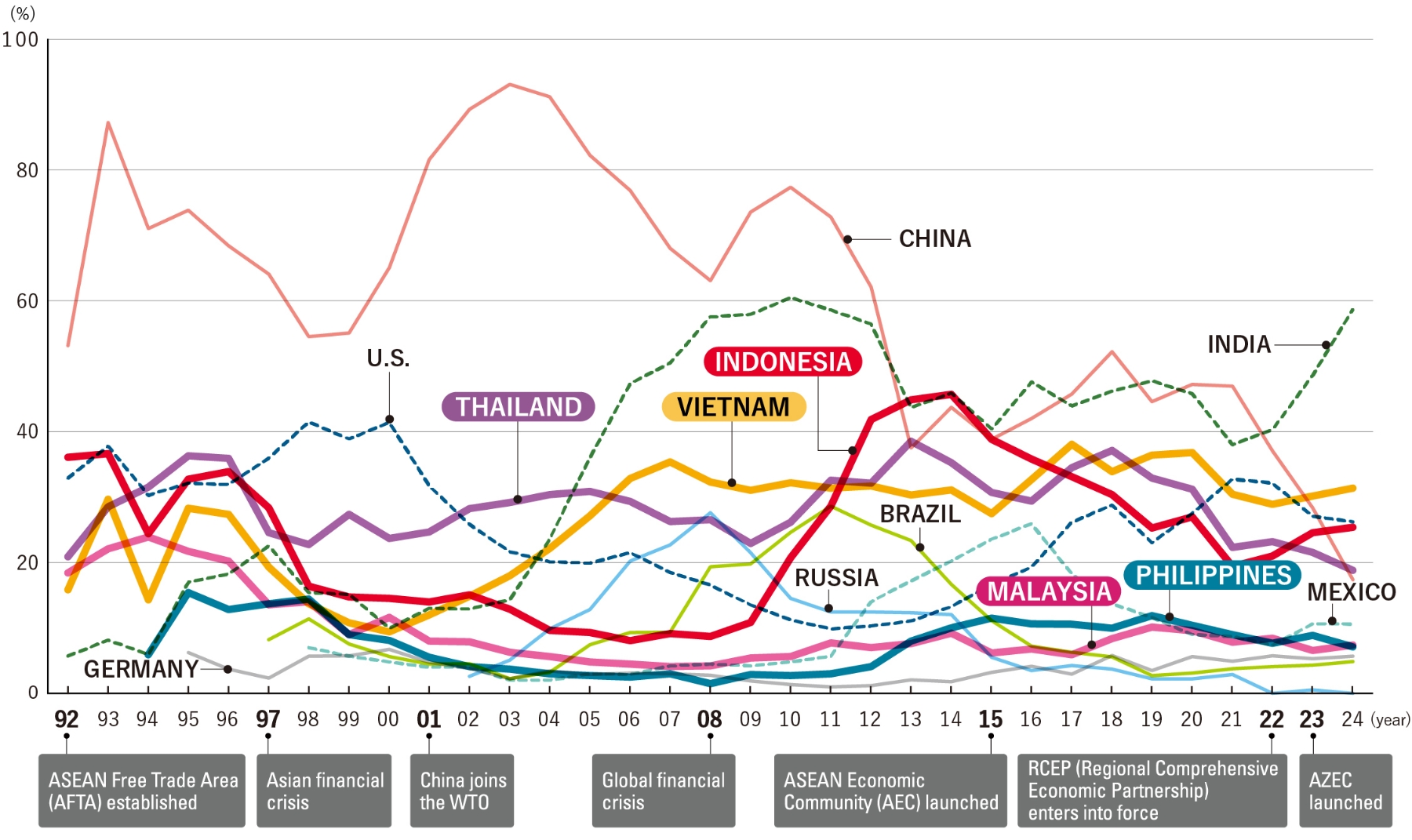
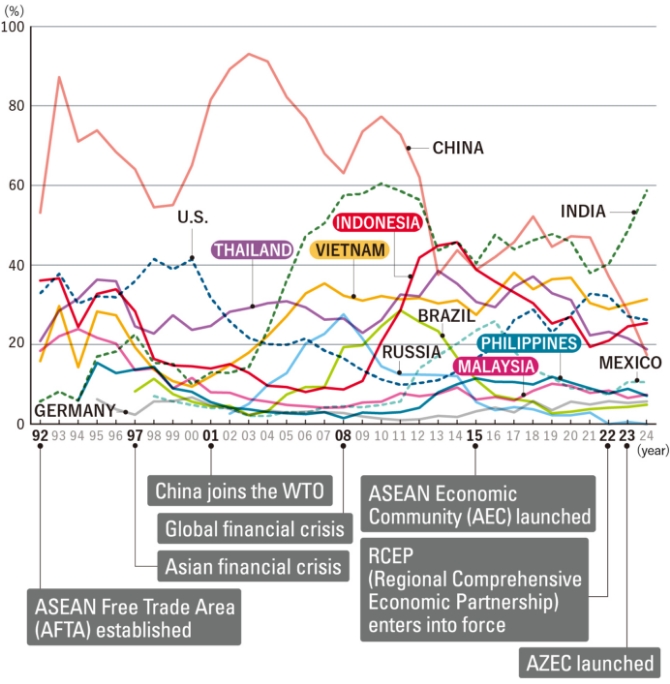
Respondent companies listed up to five countries they considered promising for business development in the medium term (the next three years).
Votes for China declined sharply this year, falling in the rankings from third place to an all-time low of sixth. China held the top position from 1992, when the survey first introduced the question about the most promising country, until 2012, and remained a popular destination afterward.
Factors behind the decline include its domestic economic slowdown, intensifying competition with local companies and diversification away from China due to ongoing tensions with the U.S. However, this does not mean that China is no longer considered an option. Expansion of operations into its huge market is still viewed as attractive.
Meanwhile, production and export bases are shifting away from China, with ASEAN member countries that participate in AZEC increasing their presence. Vietnam held on to second place from the previous year, Indonesia came in fourth, Thailand fifth, Malaysia eighth, and the Philippines ninth. In their favor are proximity to Japan, growth potential, and low labor costs.
Vietnam is gaining attention as a risk-diversification destination. Its strengths as a manufacturing and export base have long been recognized, and it is increasingly seen as an alternative to China. In the supply chain restructuring analysis, Vietnam was the most frequently cited destination for relocating manufacturing and sales bases from China.
Indonesia, home to ASEAN’s largest population of about 280 million, is garnering rising expectations as a market; compared to Vietnam, more companies are targeting its domestic demand. But in the automobile sector—Japan’s largest area of investment―issues include the rise of Chinese EV manufacturers and sluggish sales growth due to an underdeveloped middle class.
Thailand, like Vietnam, is a popular choice for diversification of manufacturing and sales bases from China. Malaysia is strong in the electrical and electronic device industries, with semiconductor and data center-related investment on the rise. Meanwhile, the Philippines dropped one spot in the rankings due to rising labor costs.
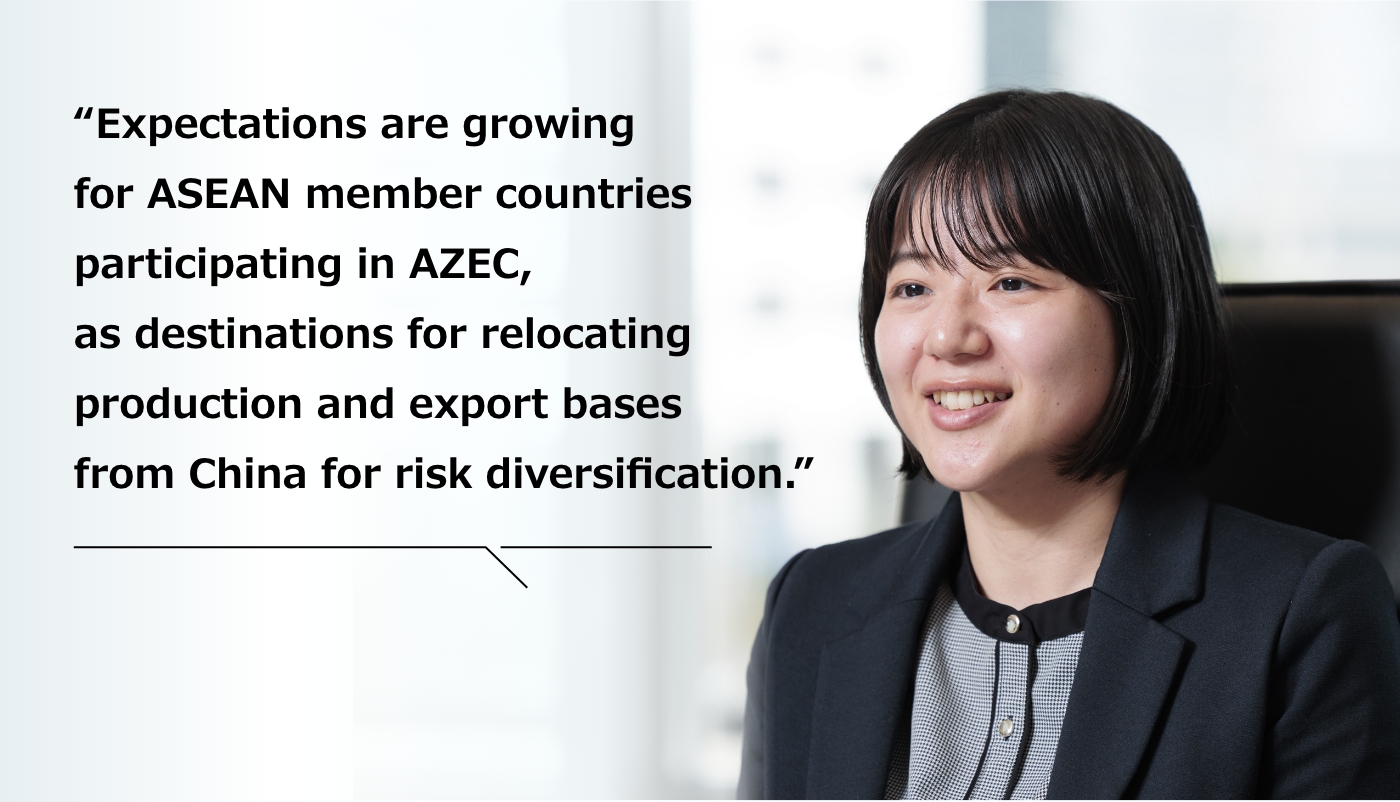
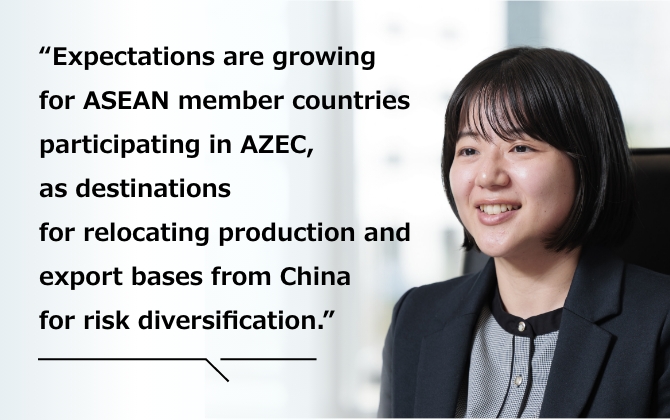
India also places top for non-manufacturing industries, with seven AZEC countries make the top ten
For the first time, the survey included non-manufacturing industries such as wholesale, construction, transportation, and finance/insurance. India also topped the non-manufacturing sector’s ranking of promising countries for investment, followed by Indonesia in second, Vietnam third, and the U.S. in fourth place. The Philippines, which ranked ninth for the manufacturing sector, took fifth place here due to its market growth potential and skilled English-speaking workforce.
In addition, Australia and Malaysia shared sixth place, followed by Thailand in eighth, and Singapore ninth, for a total of seven AZEC partner countries also making the top ten for non-manufacturing industries.

When asked what motivated her to join JBIC, ASAI Mizuki says, “I was interested in public services and always dreamed of having a job with an international connection.”
High interest in decarbonization but efforts in overseas markets are just beginning
The survey also addressed sustainability initiatives. Of the manufacturing companies that responded, about 65 percent are working to make their existing products and services more energy efficient and to reduce carbon emissions. Some 90 percent of these companies are undertaking such initiatives in Japan. Next was China at about 20 percent, followed by Thailand, the U.S., Indonesia, Vietnam, and Malaysia.
Though measures overseas still lag behind those in Japan, the high rankings of AZEC partner countries point to significant potential for future initiatives.
Meanwhile, increased costs, underdeveloped systems, and a lack of financial support were cited as challenges. For example, there are generous tax breaks for EVs in Indonesia, but only limited incentives for hybrids, impacting Japanese automakers aiming to roll out various types of vehicles.
While the U.S. ranked high in this year's survey, the impact of the second Trump administration’s tariff hikes and other trade policies is creating uncertainty for the global economy. JBIC will continue to monitor trends and analyze each country’s issues to support Japanese companies in taking their next move in overseas business development.
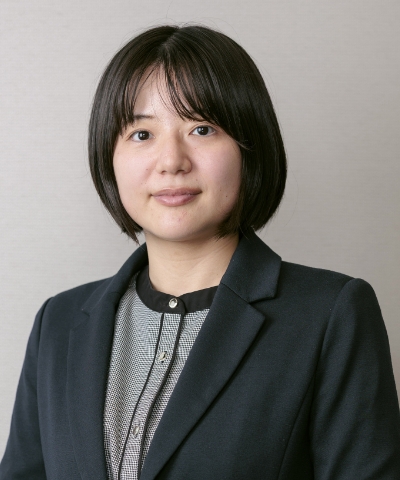


Research Analyst, Deputy Director
Division 1 & Division 2
Strategic Research Department
Corporate Planning Group, JBIC
ASAI Mizuki
Joined JBIC in 2017. After working in the Legal Affairs and Compliance Office (legal affairs), New Energy and Power Finance Department II (Southeast Asia, etc.), and Credit Department (resource projects, etc.), assumed her current position in November 2024. In charge of the survey on overseas business operations. Graduated from Hitotsubashi University, Faculty of Law.







